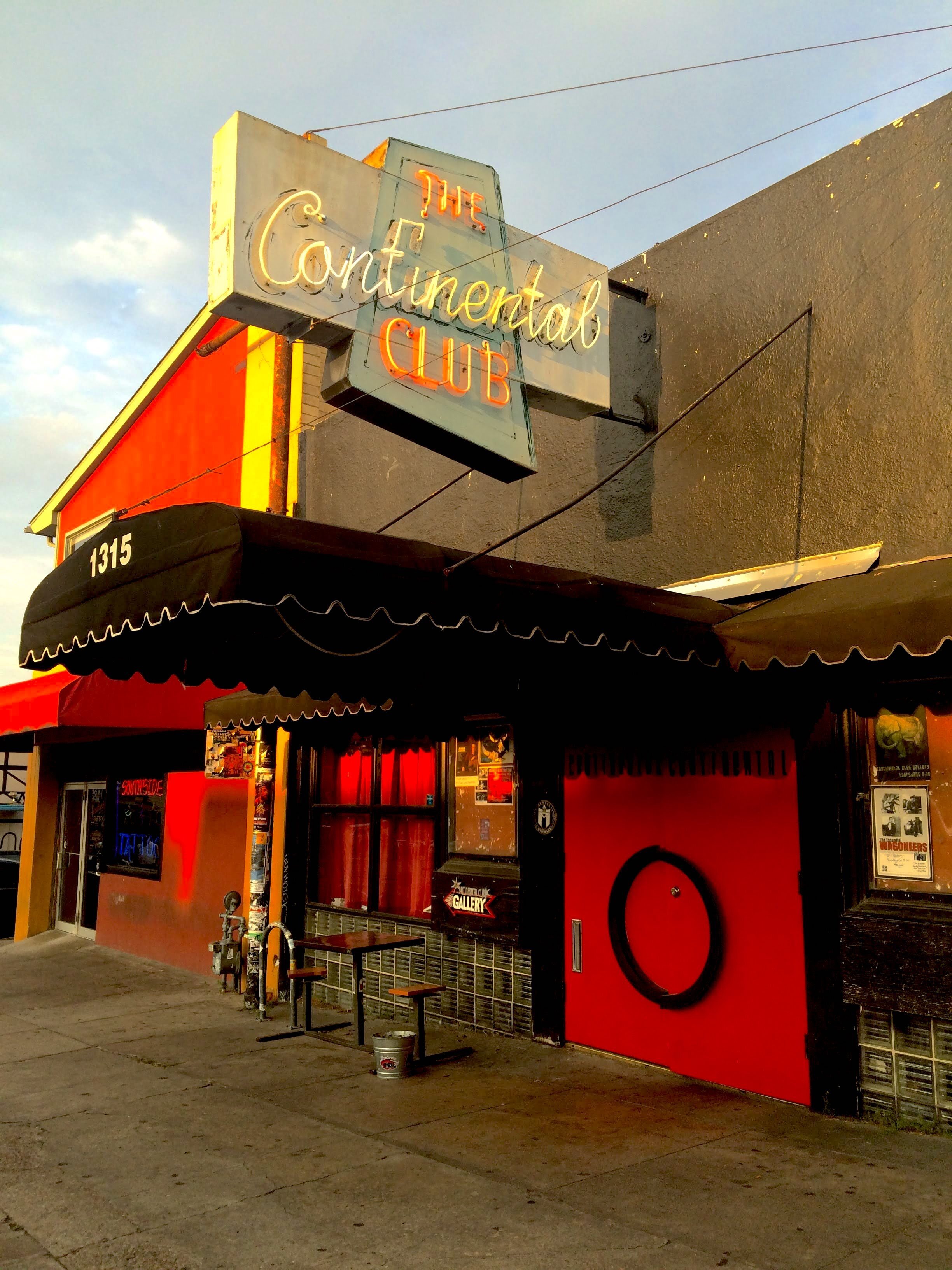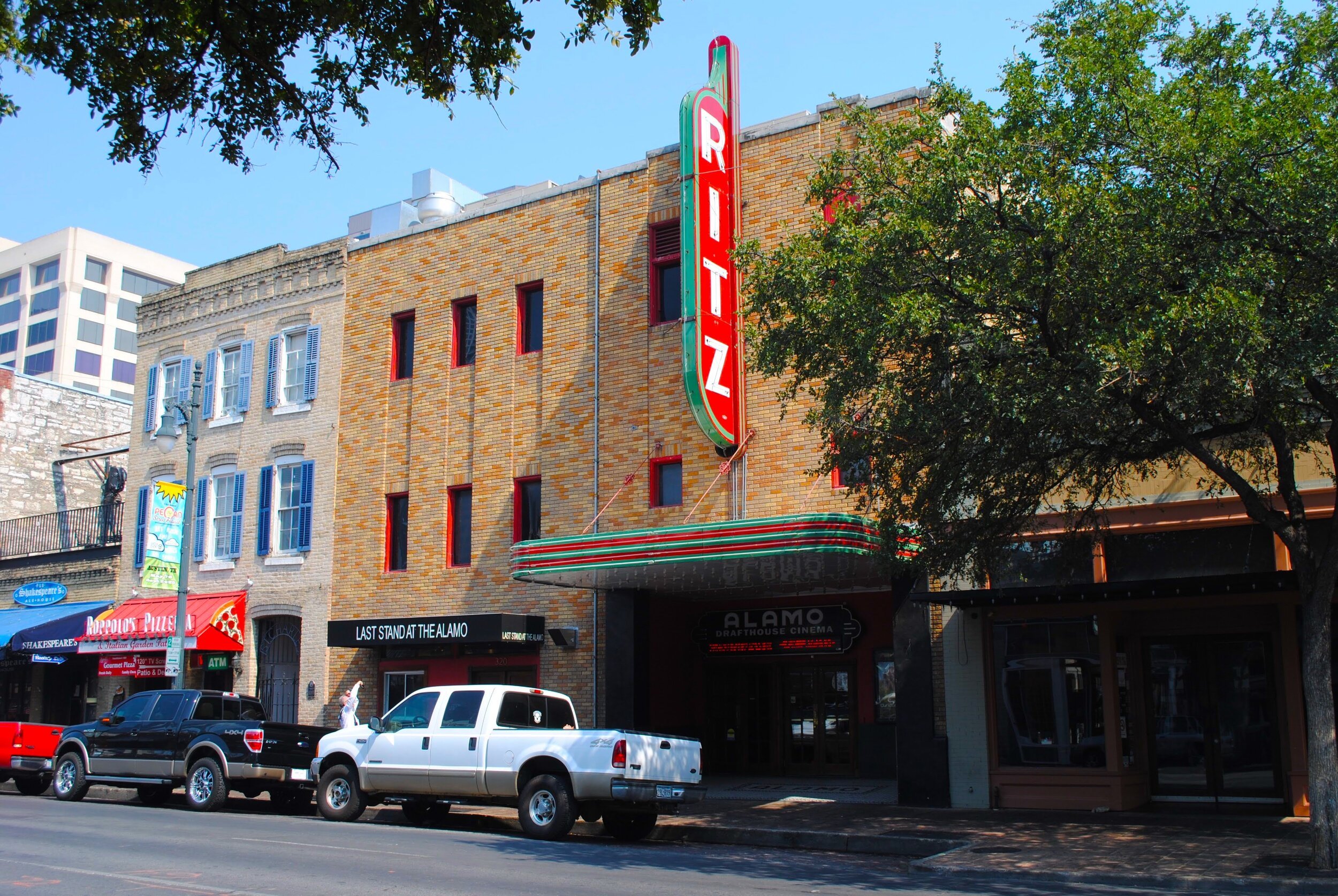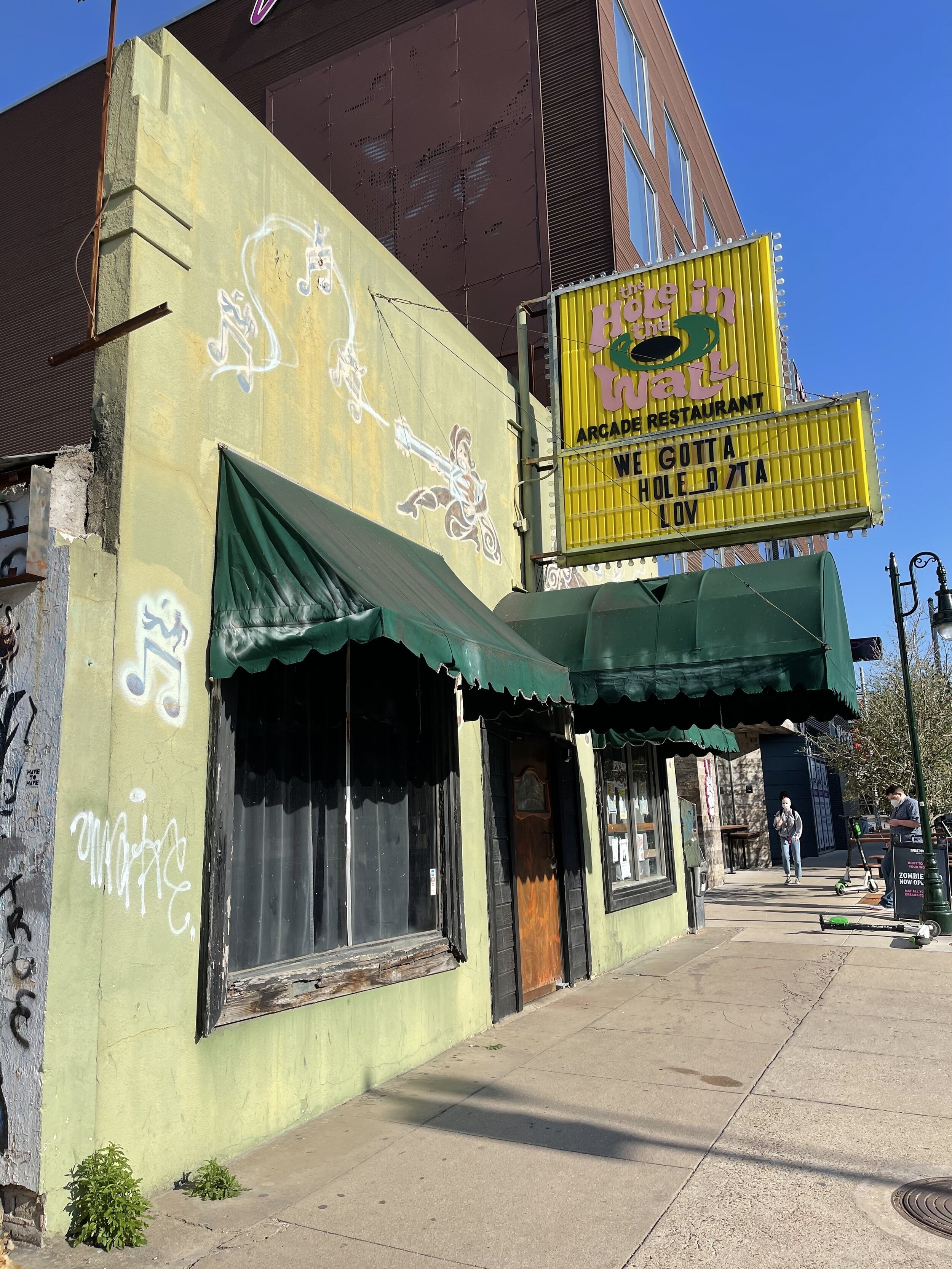Raised on Music: Growing Up in Austin’s Music Venues
BY STACEY INGRAM-KALEH & MELISSA INGRAM
Stacey Ingram Kaleh is a fourth-generation Austinite. She has served on Preservation Austin’s Education Committee for four years and is a PA Sustaining Member. Spurred by recent news of venue closures and moves due in part to rising rents and development pressures, she sat down with her mom, Melissa Ingram, to discuss their shared passion for live music, growing up immersed in Austin’s live music scene, and the ways in which music venues shape the city’s identity. They invite us to think about the venues’ impactful contributions to our shared culture as a community, and to prioritize them before they slip away.
Austin Opry House (Discogs.com)
STACEY: Live music and my experiences at local music venues have shaped my perspective on my hometown. I think, in large part, they contribute to my emotional attachment to Austin. I can only ever imagine living in a “music city.”
When I was a teenager, my friends and I were all about the venues on Red River like Stubb’s, Emo’s, and the Red Eyed Fly, as well as the venues located in what is now the 2nd Street District, La Zona Rosa and Austin Music Hall.
La Zona Rosa during SWSW in Austin. Alejandro Escovedo jams with Chuck Prophet. Fuganaga plays bass. (Portal to Texas History).
Tell us a little bit about your background with the Austin music scene and what it was like in the 70’s and 80’s. What were the popular music “districts,” like Red River now?
MELISSA: I started going out to concerts and dance halls at age 12, and I’ve been hooked ever since. I can’t imagine growing up without live music. It might sound cheesy, but it really has shaped the fabric of my life. I don’t know how else to say it. Live music was just what you did. It was part of weekly life.
As far as music “districts,” there were several. There were venues grouped around South Congress, including Armadillo World Headquarters, Austin Opry House, and the Continental Club.
The Continental Club
Sixth Street had Steamboat, Maggie Mae’s, and the Ritz. Liberty Lunch, Austin Music Hall, Club Foot, La Zona Rosa, and the Elephant Room were all between 2nd and 4th streets.
Crowd on 6th St, Steamboat in the background, 1985 (Austin History Center)
Maggie Mae’s
A lot of venues flourished around the UT campus. College students have always been early adopters and a great fan base for up-and-coming musicians. We still have Hole in the Wall and Cactus Café, but there was also Antone’s, Austin City Limits Studio 6A, Raul’s, and others. Then, there were the dance halls like the Broken Spoke and Skyline that drew in country artists.
There were some venues located off on their own, like the Back Room, Backyard, and Soap Creek Saloon. We seem to have more destination venues that are not necessarily grouped near others now.
Antone outside the original location of Antone’s
Cactus Café
STACEY: How do music venues and iconic performances help establish Austin’s unique identity? How do they contribute to a sense of community?
MELISSA: Austin has never been about just one kind of music. Musicians of all genres have always been welcome, as have their diverse fan bases, and that is thanks to the diversity of the venues who purposefully created atmospheres conducive to rock, or blues, or two-stepping and invited a variety of artists to perform. We seemed to get a lot of touring bands from England, too, that were invited by the record stores like Waterloo, Inner Sanctum Records, and Sound Exchange. Post-Vietnam, places like the Armadillo brought people together. You’d be in a crowd with both cowboys and hippies to see Willie (Nelson). I think all of this has contributed to Austin’s identity as a welcoming and weird place, a place where any interest and passion can be pursued, and you can feel supported by your neighbors. One thing I was thinking about was the intimacy that many of the venues fostered. I think Austin is considered a place where up-and-coming artists can break out, which contributes to our identity as a hub for innovation, due to the intimate live performances that take place here. The smaller size of the venues, paired with the incredible number of venues, made Austin a place where musicians could play to packed rooms and fans always had a great view of the stage. These types of atmospheres help create an emotional connection between artist and fan, fan and artist.
Our venues are also uniquely suited to our physical climate here. Only in Austin do you see so many indoor/outdoor combination venues.
STACEY: What stands out to you the most about a venue? What are the quirky things you remember that create a strong sense of place? I think about the mural at Emo’s, the smell of BBQ and reddish gravel that dusts your jeans at Stubb’s, or the open-duct ceiling at the Back Room that punk rockers would swing from.
MELISSA: Steamboat had a great balcony that allowed you to see the band from anywhere, and the limestone walls kept it cool inside. Armadillo had great crowd flow. It would be packed but you could still move around easily. You could see multiple bands at Maggie Mae’s by walking from the downstairs stage to the rooftop stage. And you could see the stars during a performance at Liberty Lunch, which used to be an old wagon yard.
Alamo Ritz
STACEY: Why do you think it is important to preserve Austin’s music venues?
MELISSA: Our music venues have built the character of our city. We’re known as the music capital because of the inclusive, diverse, innovative and entrepreneurial culture that the venues, businesses founded to support musicians, have established. Memories and nostalgia are tied to a specific place, and it’s not the same when venues move to new locations. There’s an emotional jogging in returning to a place and knowing what has happened there, who’s performed there. I think we are also able to attract the highest quality artists because they enjoy being an extension of that history, performing in the same place as Stevie Ray Vaughan or Janis Joplin or Eric Johnson.
Hole in the Wall
STACEY: I agree. I think preserving our venues helps preserve the authentic spirit of Austin. It gives us credibility when we call ourselves “the live music capital,” and our unique history does attract high caliber artists. For example, when Dave Grohl chose Austin as a source of inspiration for the Foo Fighters’ “Sonic Highways” documentary and album, he chose to record at Studio 6A even though we have the Moody Theater now. He wanted to feel the history in that space.
And one of the coolest things about talking about music in Austin is that, undoubtedly, everyone around you will start chiming in on your conversation to share their favorite memories. I love how people are coming up to us as we talk even now.
MELISSA: Yes, I love that, too. Venues and performances give our community these shared experiences. These are the stories we keep telling. Concert experiences are a topic of conversation that doesn’t have generational boundaries – Austinites of all ages who love music want to see great artists perform in legendary spaces. And, as you can see, talking about these experiences connects you with your fellow Austinites. Years from now you will have a connection with a stranger who was at the same show. I believe the audiences that patronize venues now will one day be able to financially support them again, and they will want to do so because of the impactful communal experiences they’ve enjoyed there, if the venues are able to stick around long enough.
Elvis Costello playing with The Skunks at Raul’s
STACEY: Okay, I have to sneak this one in! What is one of your most memorable moments at a venue? Maybe something that’s become Austin legend?
MELISSA: Joe “King” Carrasco laid down in the middle of Congress Avenue during his show at the Continental Club. I can’t choose just one! I remember Elvis Costello playing with The Skunks at Raul’s. The Police played at Armadillo World Headquarters for $2 and everyone in the crowd got a whistle. And, when the Rolling Stones finally made it to town, going with you and your brother to see them at Zilker.
THIS ARTICLE WAS WRITTEN FOR PRESERVATION AUSTIN’S WINTER 2017 NEWSLETTER. READ OUR COMPLETE NEWSLETTER ARCHIVE HERE.










